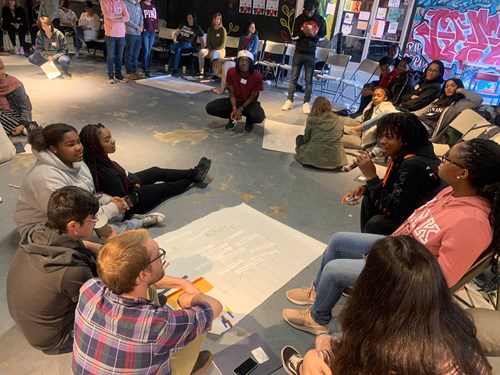Methodology for the Strong Beginnings Communities and Licensed Childcare Providers Map
-
Using the ZIP codes providing by Strong Beginnings’ ECCs to outline the areas where children live, we mapped all providers whose are licensed to serve three-year-olds.
-
Some sites’ communities overlap as they enroll children from the same ZIP code. Unlicensed, license-exempted, and informal childcare providers are not captured in the data, which are all a part of the larger care ecosystem. Only licensed providers offering care to three-year-olds are mapped. Changes in childcare capacity are determined by comparing a daily list of providers actively licensed in the Michigan Licensing and Regulatory Affairs (LARA) database to the list of providers operating in July 2022.
-
Childcare providers do not have to share their reason for closing. Possible reasons include staff shortages, providers switching to different careers or retiring, providers changing license types or moving, or a lack of children.
-
The U.S. Census Bureau’s 2022 American Community Survey estimates the number of three- and four-year-olds in each ZIP code. To estimate the number of three-year-olds in each community, we assumed that half of the American Community Survey’s estimate were three-year-olds. Additionally, the U.S. Census Bureau’s 2022 American Community Survey estimates the number of children under five years old who are under the poverty line. It does not breakdown its estimate for each ZIP code by age. It is assumed that the percentage of children under five below the poverty level is demonstrates of the number of three-year-olds under the poverty level.
-
We estimated providers’ number of slots for three-year-olds by subtracting the number of GSRP students at each site from its total licensed capacity; the difference was then divided their total licensed capacity by the age of ranges served. Providers that are closed are automatically assumed to have no capacity for three-year-olds. The formula is (((Total Capacity - # of Strong Beginnings Slots - # of GSRP Slots)/(Max Age Cared For - Minimum Age Cared For)) + # of Strong Beginnings Slots).
-
DiversityDataKids.org and Brandeis University created the Child Opportunity Index 3.0 to measure children’s opportunities within their neighborhoods. It captures community’s characteristics through a compilation of education, health and environment, and socio-economic data. Each ZIP code’s Child Opportunity Index Score compares local data to the national average. The higher the score, the more resources a community has. Scores are broken down into categories: Very High and High as well-resourced, Moderate, and Low and Very Low as under-resourced.
-
Michigan is a geographically diverse state, which can impact population density and available resources. The National Center for Education Statistics’ Education Demographic and Geographic Estimates program examines each ZIP code’s size and population to determine its location type. Locations can be classified as rural, a town, suburban, or a city.
References
diversitydatakids.org (2024). Child Opportunity Index 3.0 database. Institute for Child, Youth and Family Policy at the Heller School for Social Policy and Management at Brandeis University. https://www.diversitydatakids.org/child-opportunity-index
Manson, S., Schroeder, J., Van Riper, D., Knowles, K., Kugler, T., Roberts, F., and Ruggles, S. (2023). IPUMS National Historical Geographic Information System: Version 18.0 [dataset]. Institute for Social Research and Data Innovation at
University of Minnesota. http://doi.org/10.18128/D050.V18.0
Michigan Licensing and Regulatory Affairs. (2024). Child Care Hub Information Records Portal. State of Michigan Child Care Licensing System. https://www.michigan.gov/mileap/early-childhood-education/cclb
Michigan State University. (2024). ISD and GSRP Site Locations. University Outreach and Engagement - Community Evaluation Programs. https://cep.msu.edu/projects/great-start-readiness-program-state-evaluation/maps/A-ISDs%20and%20GSRP%20sites%202021-22
U.S. Department of Education. (n.d.). Education Demographic and Geographic Estimates Program (EDGE): Locale Boundaries. National Center for Education Statistics. https://nces.ed.gov/programs/edge/Geographic/LocaleBoundaries








